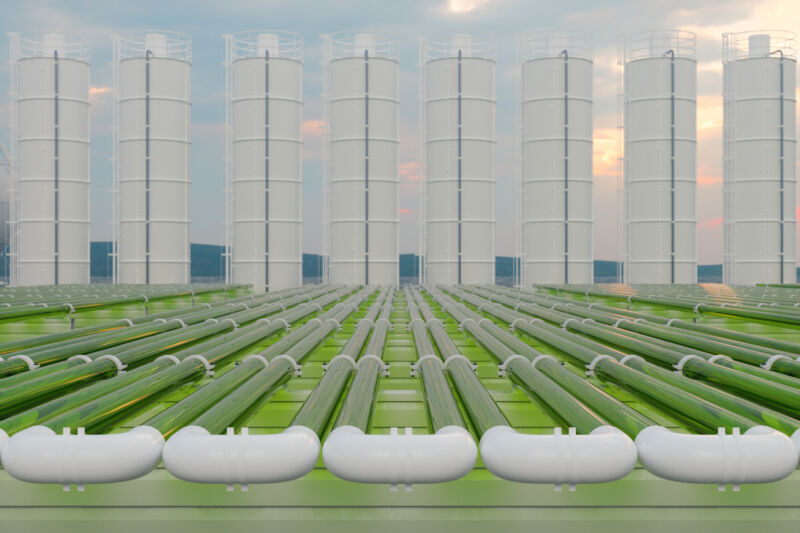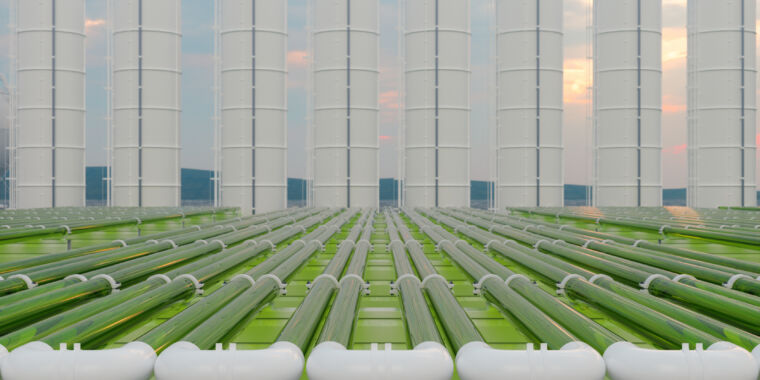
On Thursday, the US Department of Energy (DOE) announced the latest program to come out of the bipartisan infrastructure funding package that was passed last year. In this case, the money is going to foster the development of a technology that we’ll almost certainly need but is currently underdeveloped: capture of carbon dioxide from the air and its stable storage. The infrastructure law set aside $3.5 billion for direct air capture, and the DOE plans to use that to fund four facilities spread across the US.
Direct air capture has suffered from a bit of a catch-22. Most scenarios for limiting end-of-century warming assume we’ll emit enough carbon dioxide in the next few decades to overshoot our climate goals and will therefore need to remove some from the atmosphere. That would necessitate the development of direct air capture technologies. But, at present, there’s no way to fund the operation of a facility to do the capturing, so the technology remains immature and its economics poorly understood.
The DOE’s funding has the potential to change some of that. It has a total of $3.5 billion to spend in the years 2022 through 2026. It plans to use that to fund four carbon-capture and storage centers spread across the US, each with the capability of permanently storing a million metric tons of carbon dioxide a year.
The funding will handle the entire process: the facility that removes and concentrates the carbon dioxide; any pipelines or transport hardware needed to get to where it’s used or stored; and any equipment needed to do the storage. The funding is agnostic about the method used for capture and storage, mentioning that chemical capture, removal by biomass, and sequestration in the ocean are all options.
The entire project will be subject to life-cycle analysis to determine the actual capture potential of any projects. This will include all the materials and energy involved in building and operating the facility, any emissions due to land use changes, and the duration of the sequestration of the carbon dioxide. If, for example, underground storage will be used, then leakage from the storage area will be considered. Similarly, sequestration via chemical reactions will need to have their efficiency monitored, and incorporation into a product will need to have the product’s lifespan taken into account.
The current call for proposals will seek to fund projects at the same time that feasibility studies are conducted and permits obtained; another competitive evaluation will occur before things move on to the design and construction phase. The DOE says projects will be evaluated by metrics including estimated cost per ton of CO2 handled, the overall handling capacity, and potential for long-term employment. Location will also be a major factor. The DOE would like to have two placed in regions that are currently producing fossil fuels, to have all of them placed in areas with a high geological carbon storage potential, and to have the four spread out in different regions of the country.
Current plans are to have construction start in 2026 and operations begin by 2029. Obviously, problems could arise due to a change of administration in the intervening years. But once the sites are chosen, these projects are likely to find defenders in Congress that will make shutting them down more difficult.
Once constructed, the biggest challenge will be the plant operations. Carbon capture makes far more climate sense if it’s coupled with renewable energy, but the DOE doesn’t appear to have that as a consideration. And the economics of direct air capture remains problematic. Various combinations of carbon taxes, materials produced by chemical reactions involving CO2, and a desire for high-quality carbon offsets could all help tilt the balance toward profitability. But so far, none of these has emerged on a large enough scale to fund multiple high-capacity projects like these.








